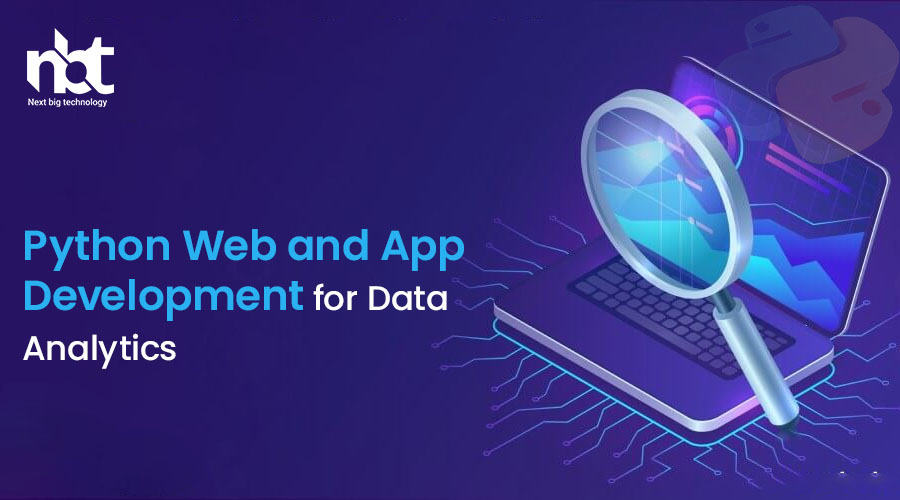Table of Contents
I. Introduction
In the fast-evolving landscape of data analytics, Python stands tall as a preferred language for its readability, flexibility, and extensive library support. This article delves into the intricate dance between Python, web development, app development, and the fascinating world of data analytics.
II. Python in Data Analytics
A. Strengths of Python for Data Analytics
Python’s simplicity and readability make it an ideal choice for data analytics. Its rich ecosystem of libraries, including Pandas, NumPy, and Matplotlib, empowers data scientists to manipulate and visualize data efficiently.
B. Widely Used Libraries and Frameworks
Python boasts frameworks like TensorFlow and PyTorch for machine learning, contributing to its prominence in the data analytics arena.
III. Web Development with Python
A. Django Framework for Web Development
Django, a high-level Python web framework, accelerates web development by providing a clean and pragmatic design. Its “batteries-included” philosophy streamlines the development process.
B. Flask Framework for Lightweight Web Applications
Flask, a micro-framework, offers simplicity and flexibility, making it an excellent choice for developing lightweight web applications.
C. Advantages of Using Python for Web Development
Python’s readability, coupled with the versatility of frameworks like Django and Flask, results in rapid development cycles and maintainable codebases.
IV. App Development with Python
A. Introduction to App Development with Python
Python extends its prowess to mobile app development, offering a unified platform for creating cross-platform applications.
B. Kivy Framework for Cross-Platform App Development
Kivy, a Python library, facilitates the development of cross-platform mobile applications, providing a consistent user experience across different devices.
V. Integrating Data Analytics in Web and App Development
A. Connecting Python Data Analytics Tools to Web Applications
The seamless integration of data analytics tools into web applications enhances decision-making processes, providing users with real-time insights.
B. Enhancing User Experience with Data-Driven Features
By incorporating data-driven features, developers can create more personalized and engaging user experiences, improving overall satisfaction.
VI. Challenges and Solutions
A. Addressing Challenges in Python Web and App Development
Challenges, such as scalability and performance bottlenecks, are inherent in development. Adopting best practices and leveraging appropriate tools can mitigate these challenges effectively.
B. Solutions to Common Issues
Identifying common issues, such as security vulnerabilities or compatibility concerns, and providing practical solutions ensures a smoother development process.
VII. Case Studies
Explore real-world examples of organizations that successfully implemented Python web and app development for data analytics, showcasing the transformative power of these technologies.
VIII. Future Trends
A. Emerging Technologies in Python Development for Data Analytics
Stay ahead of the curve by exploring emerging technologies that are poised to reshape Python development for data analytics in the coming years.
B. Anticipated Advancements in the Field
Predictions on the future advancements in Python web and app development, offering insights into potential breakthroughs and innovations.
IX. Tips for Effective Python Web and App Development
A. Best Practices for Developers
Incorporate best practices to ensure code quality, maintainability, and optimal performance throughout the development lifecycle.
B. Optimizing Performance and Scalability
Tips and techniques for optimizing the performance and scalability of Python web and app development projects, ensuring a smooth user experience.
X. Importance of User Interface (UI) and User Experience (UX)
A. Design Considerations for Python Web and App Development
Highlighting the significance of intuitive and visually appealing design in creating a positive user experience.
B. Ensuring a Seamless and Intuitive User Interface
Practical tips on crafting a seamless and intuitive user interface that enhances user satisfaction and engagement.
XI. Security Measures in Python Development
A. Overview of Security Challenges
Identifying and addressing security challenges in Python development, emphasizing the importance of robust security measures.
B. Implementing Robust Security Measures
Practical steps and tools for implementing robust security measures to safeguard web and app development projects.
XII. Collaborative Development in Python
A. Team Collaboration Tools and Practices
Explore tools and collaborative practices that facilitate effective teamwork in Python development projects, ensuring a cohesive and efficient workflow.
B. Achieving Synergy in Python Development Projects
Strategies for fostering synergy among team members, promoting a collaborative environment that leads to successful project outcomes.
XIII. Advantages of Outsourcing Python Development
A. Benefits of Outsourcing Web and App Development Projects
Examine the advantages of outsourcing Python development projects, including cost-effectiveness and access to a global talent pool.
B. Choosing the Right Outsourcing Partner
Considerations and tips for selecting the right outsourcing partner, ensuring a successful collaboration that aligns with project goals.
XIV. Client Testimonials
Read success stories from clients who chose Python web and app development for their data analytics needs, showcasing the tangible benefits and outcomes.
XV. Conclusion
In conclusion, Python web and app development for data analytics present a dynamic and powerful combination. The versatility of Python, coupled with its frameworks and libraries, offers a comprehensive solution for creating robust and scalable applications that leverage the full potential of data analytics.
Thanks for reading our post “Python Web and App Development for Data Analytics”. Please connect with us to know more about Python Web and App Development.






















